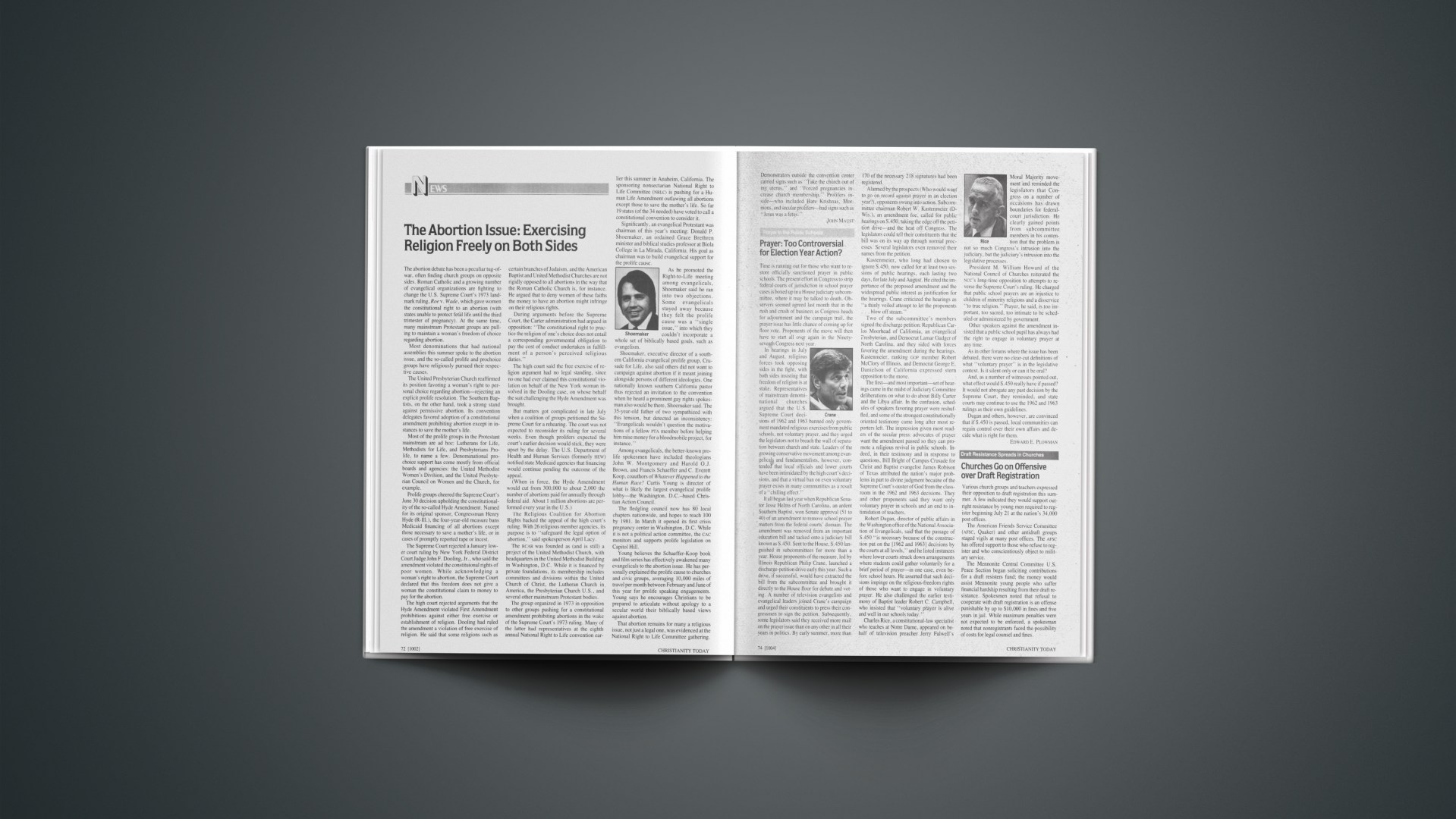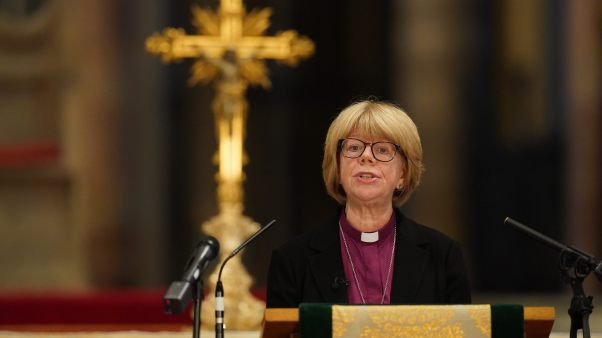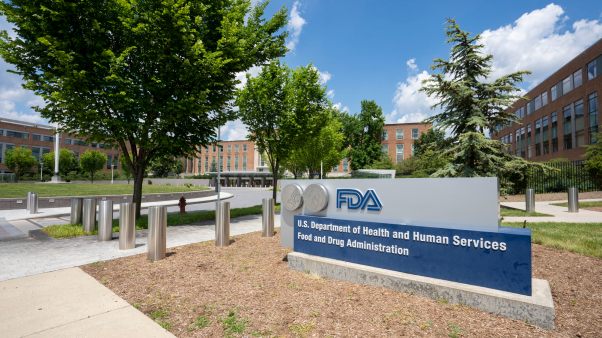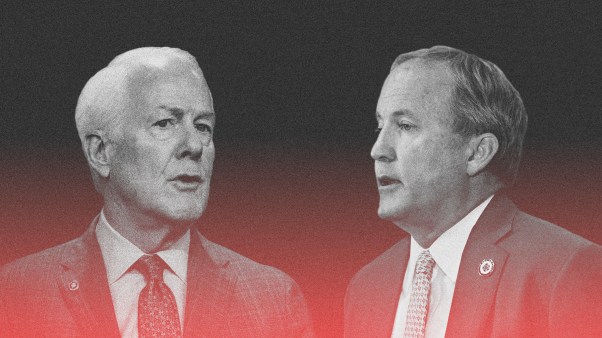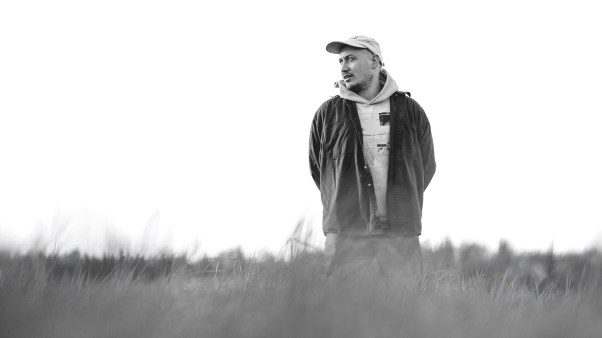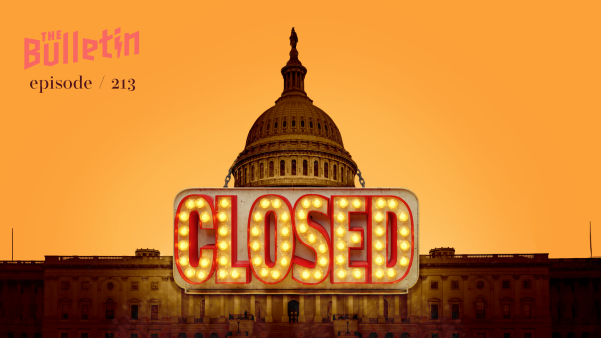The abortion debate has been a peculiar tug-of-war, often finding church groups on opposite sides. Roman Catholic and a growing number of evangelical organizations are fighting to change the U.S. Supreme Court’s 1973 landmark ruling, Roe v. Wade, which gave women the constitutional right to an abortion (with states unable to protect fetal life until the third trimester of pregnancy). At the same time, many mainstream Protestant groups are pulling to maintain a woman’s freedom of choice regarding abortion.
Most denominations that had national assemblies this summer spoke to the abortion issue, and the so-called prolife and prochoice groups have religiously pursued their respective causes.
The United Presbyterian Church reaffirmed its position favoring a woman’s right to personal choice regarding abortion—rejecting an explicit prolife resolution. The Southern Baptists, on the other hand, took a strong stand against permissive abortion. Its convention delegates favored adoption of a constitutional amendment prohibiting abortion except in instances to save the mother’s life.
Most of the prolife groups in the Protestant mainstream are ad hoc: Lutherans for Life, Methodists for Life, and Presbyterians Prolife, to name a few. Denominational prochoice support has come mostly from official boards and agencies: the United Methodist Women’s Division, and the United Presbyterian Council on Women and the Church, for example.
Prolife groups cheered the Supreme Court’s June 30 decision upholding the constitutionality of the so-called Hyde Amendment. Named for its original sponsor, Congressman Henry Hyde (R-Ill.), the four-year-old measure bans Medicaid financing of all abortions except those necessary to save a mother’s life, or in cases of promptly reported rape or incest.
The Supreme Court rejected a January lower court ruling by New York Federal District Court Judge John F. Dooling, Jr., who said the amendment violated the constituional rights of poor women. While acknowledging a woman’s right to abortion, the Supreme Court declared that this freedom does not give a woman the constitutional claim to money to pay for the abortion.
The high court rejected arguments that the Hyde Amendment violated First Amendment prohibitions against either free exercise or establishment of religion. Dooling had ruled the amendment a violation of free exercise of religion. He said that some religions such as certain branches of Judaism, and the American Baptist and United Methodist Churches are not rigidly opposed to all abortions in the way that the Roman Catholic Church is, for instance. He argued that to deny women of these faiths the money to have an abortion might infringe on their religious rights.
During arguments before the Supreme Court, the Carter administration had argued in opposition: “The constitutional right to practice the religion of one’s choice does not entail a corresponding governmental obligation to pay the cost of conduct undertaken in fulfillment of a person’s perceived religious duties.”
The high court said the free exercise of religion argument had no legal standing, since no one had ever claimed this constitutional violation on behalf of the New York woman involved in the Dooling case, on whose behalf the suit challenging the Hyde Amendment was brought.
But matters got complicated in late July when a coalition of groups petitioned the Supreme Court for a rehearing. The court was not expected to reconsider its ruling for several weeks. Even though prolifers expected the court’s earlier decision would stick, they were upset by the delay. The U.S. Department of Health and Human Services (formerly HEW) notified state Medicaid agencies that financing would continue pending the outcome of the appeal.
(When in force, the Hyde Amendment would cut from 300,000 to about 2,000 the number of abortions paid for annually through federal aid. About 1 million abortions are performed every year in the U.S.)
The Religious Coalition for Abortion Rights backed the appeal of the high court’s ruling. With 26 religious member agencies, its purpose is to “safeguard the legal option of abortion,” said spokesperson April Lacy.
The RCAR was founded as (and is still) a project of the United Methodist Church, with headquarters in the United Methodist Building in Washington, D.C. While it is financed by private foundations, its membership includes committees and divisions within the United Church of Christ, the Lutheran Church in America, the Presbyterian Church U.S., and several other mainstream Protestant bodies.
The group organized in 1973 in opposition to other groups pushing for a constitutional amendment prohibiting abortions in the wake of the Supreme Court’s 1973 ruling. Many of the latter had representatives at the eighth annual National Right to Life convention earlier this summer in Anaheim, California. The sponsoring nonsectarian National Right to Life Committee (NRLC) is pushing for a Human Life Amendment outlawing all abortions except those to save the mother’s life. So far 19 states (of the 34 needed) have voted to call a constitutional convention to consider it.
Significantly, an evangelical Protestant was chairman of this year’s meeting: Donald P. Shoemaker, an ordained Grace Brethren minister and biblical studies professor at Biola College in La Mirada, California. His goal as chairman was to build evangelical support for the prolife cause.
As he promoted the Right-to-Life meeting among evangelicals, Shoemaker said he ran into two objections. Some evangelicals stayed away because they felt the prolife cause was a “single issue,” into which they couldn’t incorporate a whole set of biblically based goals, such as evangelism.
Shoemaker, executive director of a southern California evangelical prolife group, Crusade for Life, also said others did not want to campaign against abortion if it meant joining alongside persons of different ideologies. One nationally known southern California pastor thus rejected an invitation to the convention when he heard a prominent gay rights spokesman also would be there, Shoemaker said. The 35-year-old father of two sympathized with this tension, but detected an inconsistency: “Evangelicals wouldn’t question the motivations of a fellow PTA member before helping him raise money for a bloodmobile project, for instance.”
Among evangelicals, the better-known prolife spokesmen have included theologians John W. Montgomery and Harold O.J. Brown, and Francis Schaeffer and C. Everett Koop, coauthors of Whatever Happened to the Human Race? Curtis Young is director of what is likely the largest evangelical prolife lobby—the Washington, D.C.-based Christian Action Council.
The fledgling council now has 80 local chapters nationwide, and hopes to reach 100 by 1981. In March it opened its first crisis pregnancy center in Washington, D.C. While it is not a political action committee, the CAC monitors and supports prolife legislation on Capitol Hill.
Young believes the Schaeffer-Koop book and film series has effectively awakened many evangelicals to the abortion issue. He has personally explained the prolife cause to churches and civic groups, averaging 10,000 miles of travel per month between February and June of this year for prolife speaking engagements. Young says he encourages Christians to be prepared to articulate without apology to a secular world their biblically based views against abortion.
That abortion remains for many a religious issue, not just a legal one, was evidenced at the National Right to Life Committee gathering. Demonstrators outside the convention center carried signs such as “Take the church out of my uterus,” and “Forced pregnancies increase church membership.” Prolifers inside—who included Hare Krishnas, Mormons, and secular prolifers—had signs such as “Jesus was a fetus.”
Prayer in the Public Schools
Prayer: Too Controversial for Election Year Action?
Time is running out for those who want to restore officially sanctioned prayer in public schools. The present effort in Congress to strip federal courts of jurisdiction in school prayer cases is boxed up in a House judiciary subcommittee, where it may be talked to death. Observers seemed agreed last month that in the rush and crush of business as Congress heads for adjournment and the campaign trail, the prayer issue has little chance of coming up for floor vote. Proponents of the move will then have to start all over again in the Ninety-seventh Congress next year.
In hearings in July and August, religious forces took opposing sides in the fight, with both sides insisting that freedom of religion is at stake. Representatives of mainstream denominational churches argued that the U.S. Supreme Court decisions of 1962 and 1963 banned only government mandated religious exercises from public schools, not voluntary prayer, and they urged the legislators not to breach the wall of separation between church and state. Leaders of the growing conservative movement among evangelicals and fundamentalists, however, contended that local officials and lower courts have been intimidated by the high court’s decisions, and that a virtual ban on even voluntary prayer exists in many communities as a result of a “chilling effect.”
It all began last year when Republican Senator Jesse Helms of North Carolina, an ardent Southern Baptist, won Senate approval (51 to 40) of an amendment to remove school prayer matters from the federal courts’ domain. The amendment was removed from an important education bill and tacked onto a judiciary bill known as S.450. Sent to the House, S.450 languished in subcommittees for more than a year. House proponents of the measure, led by Illinois Republican Philip Crane, launched a discharge-petition drive early this year. Such a drive, if successful, would have extracted the bill from the subcommittee and brought it directly to the House floor for debate and voting. A number of television evangelists and evangelical leaders joined Crane’s campaign and urged their constituents to press their congressmen to sign the petition. Subsequently, some legislators said they received more mail on the prayer issue than on any other in all their years in politics. By early summer, more than 170 of the necessary 218 signatures had been registered.
Alarmed by the prospects (Who would want to go on record against prayer in an election year?), opponents swung into action. Subcommittee chairman Robert W. Kastenmeier (D-Wis.), an amendment foe, called for public hearings on S.450, taking the edge off the petition drive—and the heat off Congress. The legislators could tell their constituents that the bill was on its way up through normal processes. Several legislators even removed their names from the petition.
Kastenmeier, who long had chosen to ignore S.450, now called for at least two sessions of public hearings, each lasting two days, for late July and August. He cited the importance of the proposed amendment and the widespread public interest as justification for the hearings. Crane criticized the hearings as “a thinly veiled attempt to let the proponents … blow off steam.”
Two of the subcommittee’s members signed the discharge petition: Republican Carlos Moorhead of California, an evangelical Presbyterian, and Democrat Lamar Gudger of North Carolina, and they sided with forces favoring the amendment during the hearings. Kastenmeier, ranking GOP member Robert McClory of Illinois, and Democrat George E. Danielson of California expressed stern opposition to the move.
The first—and most important—set of hearings came in the midst of Judiciary Committee deliberations on what to do about Billy Carter and the Libya affair. In the confusion, schedules of speakers favoring prayer were reshuffled, and some of the strongest constitutionally oriented testimony came long after most reporters left. The impression given most readers of the secular press: advocates of prayer want the amendment passed so they can promote a religious revival in public schools. Indeed, in their testimony and in response to questions, Bill Bright of Campus Crusade for Christ and Baptist evangelist James Robison of Texas attributed the nation’s major problems in part to divine judgment because of the Supreme Court’s ouster of God from the classroom in the 1962 and 1963 decisions. They and other proponents said they want only voluntary prayer in schools and an end to intimidation of teachers.
Robert Dugan, director of public affairs in the Washington office of the National Association of Evangelicals, said that the passage of S.450 “is necessary because of the construction put on the [1962 and 1963] decisions by the courts at all levels,” and he listed instances where lower courts struck down arrangements where students could gather voluntarily for a brief period of prayer—in one case, even before school hours. He asserted that such decisions impinge on the religious-freedom rights of those who want to engage in voluntary prayer. He also challenged the earlier testimony of Baptist leader Robert C. Campbell, who insisted that “voluntary prayer is alive and well in our schools today.”
Charles Rice, a constitutional-law specialist who teaches at Notre Dame, appeared on behalf of television preacher Jerry Falwell’s Moral Majority movement and reminded the legislators that Congress on a number of occasions has drawn boundaries for federal-court jurisdiction. He clearly gained points from subcommittee members in his contention that the problem is not so much Congress’s intrusion into the judiciary, but the judiciary’s intrusion into the legislative processes.
President M. William Howard of the National Council of Churches reiterated the NCC’s long-time opposition to attempts to reverse the Supreme Court’s ruling. He charged that public school prayers are an injustice to children of minority religions and a disservice “to true religion.” Prayer, he said, is too important, too sacred, too intimate to be scheduled or administered by government.
Other speakers against the amendment insisted that a public school pupil has always had the right to engage in voluntary prayer at any time.
As in other forums where the issue has been debated, there were no clear-cut definitions of what “voluntary prayer” is in the legislative context. Is it silent only or can it be oral?
And, as a number of witnesses pointed out, what effect would S.450 really have if passed? It would not abrogate any past decision by the Supreme Court, they reminded, and state courts may continue to use the 1962 and 1963 rulings as their own guidelines.
Dugan and others, however, are convinced that if S.450 is passed, local communities can regain control over their own affairs and decide what is right for them.
EDWARD E. PLOWMAN
Draft Resistance Spreads in Churches
Churches Go on Offensive over Draft Registration
Various church groups and teachers expressed their opposition to draft registration this summer. A few indicated they would support outright resistance by young men required to register beginning July 21 at the nation’s 34,000 post offices.
The American Friends Service Committee (AFSC, Quaker) and other antidraft groups staged vigils at many post offices. The AFSC has offered support to those who refuse to register and who conscientiously object to military service.
The Mennonite Central Committee U.S. Peace Section began soliciting contributions for a draft resisters fund; the money would assist Mennonite young people who suffer financial hardship resulting from their draft resistance. Spokesmen noted that refusal to cooperate with draft registration is an offense punishable by up to $10,000 in fines and five years in jail. While maximum penalties were not expected to be enforced, a spokesman noted that nonregistrants faced the possibility of costs for legal counsel and fines.
Among the historic peace churches, the 68,000-member General Conference Mennonite Church probably went the furthest in the fight against the military. At their triennial meeting in July, delegates approved court action, if necessary, that would allow employers an exemption from withholding federal taxes from employees’ paychecks. Their action was prompted by a Mennonite employee who, in 1977, asked that her full salary be paid directly to her so that in paying her taxes she could withhold as a protest that portion that would go to the military. At the time, the church felt obligated to continue tax withholding. However, a task force subsequently was appointed and its proposal—adopted by the assembly—empowered church officers to initiate a judicial action, or test case, challenging the withholding policy on grounds of First Amendment separation of church and state.
A number of mainstream denominations also spoke toward draft registration. The Lutheran Council in the U.S.A. said in a letter to pastors that “the churches stand ready to support with counseling and love” young men who feel they should not register. United Methodist peace division provided, upon written request, cards on which young men could state and then file with the denomination their conscientious objector status prior to registration.
On July 20 a group of 36 religious leaders condemned draft registration in a signed statement, partly because they believe it to be the first step toward a military draft. They urged young men to “consider seriously the moral implications of registration for the draft.” The signers included seven bishops and ten denominational leaders, including the United Presbyterian Church, Brethren in Christ, Progressive National Baptist Convention, Christian Church (Disciples of Christ), as well as the predominantly homosexual Metropolitan Community Churches, and the Unitarian Universalist Church. A number of minority leaders also signed, noting the disproportionate number of poor and minorities who serve. These included black evangelical John Perkins of Voice of Calvary Ministries.
Broadcasting
Evangelical Foray into Canadian Radio Is Nixed
Evangelical Christians who want to operate family-oriented radio stations in Canada had better be subtle about their intentions. Even subtlety might not be enough.
That conclusion could be drawn from a nine-page, July 9 decision by the Canadian Radio-television and Telecommunication Commission (CRTC). It denied an FM station license in Vancouver, British Columbia, to Canadian Family Radio, which is headed by Ralph Jacobson, a former missionary and representative for Sudan Interior Mission who has been involved more recently in Third World development aid administrative work in Alberta.
A dissenting minority of the CRTC voted in favor of granting CFR a three-year license.
The commission’s decision was an almost complete reversal of its 16-month-old approval in principle of the Canadian Family Radio application. On February 13, 1979, the CRTC had cleared the proposal subject to further negotiations over transmitter site and power, “performance,” and frequency allocations.
Meanwhile, Interchurch Communication, representing the broadcasting units of Canadian Anglican, Federation Baptist, Lutheran, Presbyterian, Roman Catholic, and United churches, filed an intervention brief with the CRTC. The intervention cautioned that the commission appeared on the verge of licensing a “religious” radio station—a contradiction of long-standing CRTC policy.
Interchurch Communication wondered if Jacobson’s labeling of program material as “nonsectarian” could be considered a guarantee “that such programming will be of interest and benefit to all—or even a majority of—religious groups.”
Jacobson says he has recognized from the start that a religious station as such would not meet CRTC approval. The idea, he says, has been to establish an outlet responsible to traditional Judeo-Christian values.
Two Canadian Family Radio actions apparently captured the interest of Interchurch Communication and led to its intervention. In its pleas to the CRTC, Interchurch noted that Jacobson had referred to his “ministry” in an April 1979 article in Canadian Association of Christian Broadcasters’ newsletter Transmitter Views. Then, at a subsequent CRTC hearing earlier this year, Rod Booth, the United Church’s broadcast director for British Columbia, exhibited a bulletin insert CFR had distributed to churches throughout British Columbia asking that Christians pray for the venture.
As part of its 1979 approval, the CRTC had asked Jacobson for a revised promise of performance to allay the concerns of some commission members about overt religious content.
An example of CRTC concerns was Jacobson’s proposal to air 37.5 hours of nonclassical religious music each week. The nature of the programming, the commission ruled, would make the station “pervasively religious.”
While awaiting the final decision, Canadian Family Radio spent some $200,000, some of it in converting a former Canadian Broadcasting Corporation studio in centrally located Hotel Vancouver. Jacobson says work on the studio proceeded on the basis of witnessed assurances from Pierre Camu, former CRTC chairman, that the approval in principle was tantamount to a license as soon as the stipulations had been satisfied.
After hearing of the license turndown, Jacobson said some of the difficulty seemed to relate to the commission’s insistence that religious music constitutes religious programming. “In line with what we understood to be the commission’s policy, we determined gaps in the present broadcast service and found that sacred music was, indeed, lacking,” Jacobson told this reporter.
LLOYD MACKEY
Personalia
The biweekly publication of preacher Jerry Falwell’s conservative lobby, Moral Majority, recently gave four pages to a controversy between Falwell and fundamentalist educators Bob Jones, Jr., and his son. Bob Jones III. The newspaper published a letter said to have been written by Bob Jones, Jr., to June 1980 Bob Jones University graduates, in which he called Falwell “the most dangerous man in America today as far as biblical Christianity is concerned.” He stated Falwell’s Moral Majority is “one of Satan’s devices to build the world church of Anti-Christ.” In his own letter of defense, Falwell rebutted Jones’s criticisms point by point, characterized them as vitriolic, and noted Jones’s tendency to make sharp attacks against other church and political leaders.
A Harvard paleontologist has implicated the late French Jesuit author and philosopher Pierre Teilhard de Chardin in the notorious Piltdown Man hoax. Writing in Natural History, Stephen Jay Gould says his year of study showed strong evidence that de Chardin was an active and willing accomplice of British naturalist Charles Dawson, who in 1912 “found” the first of two skulls with a humanlike cranium and an ape-like jaw near Piltdown, England. Until 1953, when it was discovered the remains were a fabrication of human and ape bones, the find was hailed as the missing link. Gould suspects de Chardin was caught in a youthful joke that got out of hand.
A lawyer has joined the full-time staff of the National Association of Evangelicals Office of Public Affairs in Washington, D.C. Forest Montgomery, taking an early retirement after 25 years in the federal government (the last 15 in the treasury department), earlier this month became counsel to the public affairs office. Associate director Floyd Robertson, with NAE for the last 20 years, retired in August.
The 50-member Lausanne Committee for World Evangelization reelected evangelist Leighton Ford as chairman in a meeting following the 10-day international gathering in late June in Pattaya, Thailand. Secretary Gottfried Osei-Mensah remains in charge of the LCWE office in Nairobi, Kenya.
Airline executive James O. Plinton said he wanted to put Christ back into the Young Men’s Christian Association soon after becoming president of the national council of the YMCAS of the U.S.A. Now the black Southern Baptist layman has another restoration project. As new executive director of the Miami (Florida) Metropolitan Fellowship of Churches, largely inactive in recent years, he is heading up there—in the aftermath of rioting this summer—the group’s first major service project in a decade. Project Reconciliation is a $100,000 effort to enable eight, mostly black congregations to offer summer youth programs and provide blacks a framework for communication with church and city leaders.
Denominations
A Sticky Summer on the Denominational Circuit
“Never do this summer what you can put off until the next.” Such a statement characterizes recently completed meetings of several denominations facing particularly sticky issues.
The 175,000-member Church of the Brethren tabled until next year a reevaluation of its 25-year-old mission policy of “indigenization.” On its main mission fields—Nigeria, Ecuador, and India—the church has encouraged national churches to be self-supporting; but some Brethren are advocating more direct U.S. church involvement. Delegates did debate the merits of church growth principles. Some members wanted a greater thrust in evangelism, and others argued that lifestyle and service are sufficient witness. The discussion was in response to a study of ways to halt diminishing Church of the Brethren membership.
A task force report indicating openness toward couples who live together outside marriage stirred up general synod delegates of the Anglican Church of Canada. The report noted a growing trend toward unwed cohabitation includes even “Christian men and women,” stating, “We must be prepared to marvel, in silence, when we see that he [God] can make ‘common law marriage,’ on occasion, a means of grace.” Many speakers opposed the report. One, from Sudbury, Ontario, said the report as much as declared, “Well done, thou good and faithful shackers up; enter into the joy of our church.”
Conservative Baptists postponed until next summer decisions on a proposed restructuring of the 37-year-old movement. Some have supported changes that would unify the Conservative Baptist Foreign Mission Society, Home Mission Society, and numerous state associations of CB churches that joined the movement as self-determining entities. These three groups have remained politically independent of each other—requiring them to conduct separate business meetings before passing resolutions or amendments. Opponents fear a centralized structure would restrict the autonomy of the 1,200 Baptist churches (membership of about 300,000) that identify with the movement.
Some denominations observed anniversaries. The Church of God (Anderson, Ind.), an outgrowth of the holiness movement within Methodism in the late nineteenth century, began a year-long centennial celebration. Beginning with five worshipers in tiny Beaverdam, Indiana, the church now has 175,000 U.S. members, and 350,000 worldwide.
The National Association of Congregational Christian Churches—formed in 1955 by Congregational churches not entering the United Church of Christ—climaxed its silver anniversary celebration at the annual meeting in Galesburg, Illinois. The movement emphasizes the autonomy of local churches, of which there are about 400.
The 3-million-member Lutheran Church in America opened its biennial meeting on the 450th anniversary of the Augsburg Confession. Delegates promptly voted to change the title of the chief officer of the denomination from president to “bishop,” and of each of the 33 synods. LCA president-turned-bishop James Crumley disliked the switch, feeling Eastern Orthodox and Roman Catholics would be confused and think the change means an LCA shift toward understanding the office as those two churches do. Supporters believe the name bishop is more biblical and pastoral.
In other church meetings:
• The General Synod of the 350,000-member Reformed Church in America reached an important compromise regarding the ordination of women ministers. It approved changes in the Book of Church Order making clear that it is now legal for a woman to be ordained as a minister of the Reformed Church. At the same time, the synod acted to protect persons who cannot in good conscience support women’s ordination: it proposed that such persons not be required to participate in voting approval, ordaining, or installing a woman minister. These persons would not be allowed to vote against a woman’s ordination purely on the basis of sex, however, and must abstain from voting in such cases. Delegates discussed the United Presbyterian controversy over women’s ordination, and wanted a measure that would prevent divisions like those in the UPCUSA. Since the action involves amending the RCA Book of Church Order, its adoption will require a voted approval by two-thirds of the congregations.
• The 151,000-member Wesleyan Church declared practicing homosexuality to be sin, but recognized that “the grace of God is sufficient to overcome the practice of such activity.” At their quadrennial meeting in Indianapolis, delegates also took stands against abortion and the use of drugs, alcohol, and tobacco, and asked that members “exercise responsible stewardship” of their leisure time.
• Delegates at the twenty-fifth biennial meeting of the Greek Orthodox Archdiocese of North and South America called for a study of ways to counter the proselytizing of Greek Orthodox members by Mormons and Jehovah’s Witnesses. Analyzing his church-commissioned membership study, pollster George Gallup told delegates that Greek Orthodox young people are “searching for spiritual moorings.” He suggested they be encouraged toward Bible study, spiritual counseling, and regular prayer life.
North American Scene
United Methodism has its first woman bishop: Marjorie S. Matthews, 64, of Traverse City, Michigan. Her election in July by the UMC’s North Central Jurisdictional Conference required a record 29 ballots, then a suspension of the rules before the thirtieth, when she was elected by acclamation. Significantly, Matthews, who for the last five years has been her annual conference district superintendent, is believed to be the first elected woman bishop of any major U.S. denomination, and the first to attain this level of authority over a large ecclesiastical area within a U.S. Protestant body. She described her election to reporters as “a gigantic step for womankind and a leap in the church’s understanding of theology.” UMC women’s groups had lobbied for some time for a female bishop.
The deity of Christ issue continues to build in the Presbyterian church. A synod court has upheld the National Capitol Union Presbytery’s earlier decision to admit to a Rockville, Maryland, pastorate the transferring United Church of Christ pastor, Mansfield Kaseman. A group of pastors had appealed the decision by the presbytery (a joint United Presbyterian and Presbyterian Church in the U.S. unit), because Kaseman has refused to state without qualification that Jesus is God and had failed to satisfy their questions on other points of orthodoxy. Some local churches have already withdrawn, and others have threatened to do so, over the issue. The final outcome is pending yet another appeal—this one to the UPCUSA’s permanent judicial commission, which, says a spokesman, possibly will hear the case in January 1981.
Divinity students from Harvard and other schools learned religion by experience this summer, rather than in the classroom. Theologian Harvey Cox led a students’ group to West Virginia, where there is a mixed bag of religious groups. The students planned to spend several days (and sometimes live in the homes) with members of the large Hare Krishna settlement near Moundsville, with black fundamentalist churches, and with snake handlers, Mennonites, and fundamentalists. Cox reportedly hoped the participatory approach would in time lead to a new way to study religion that takes into account the full cultural and historical setting of each group. Harvard, Marshall University, and West Virginia College of Graduate Studies jointly sponsored the project.
The board of aldermen of Clayton, Missouri, recently nixed plans for a $9.9 million Lutheran Church-Missouri Synod headquarters building. The church had requested permission to build on the western edge of its Concordia Seminary campus, but neighbors had opposed the project as “a commercial office building” in a residential area that would increase traffic and lower property values.
The church summer financial slump has extended to refugee sponsorships. Relief agencies report difficulty in finding sponsors, particularly for single Cuban refugees. The reason is because congregations have traditionally sponsored families, not singles, and because some churches fear reports of a high number of criminals among the refugees, spokesmen say.
Baylor University has settled its year-long textbook controversy. Amid charges that the textbook People of the Covenant, coauthored by Baylor religion department chairman H. J. Flanders, presented Adam and Eve as symbols rather than historic figures and Jonah as allegory, the school conducted a review of the religion department and its texts. That review culminated in trustee board acceptance of a 10-point Academic Affairs Committee report. The Bible, it says, will be the text for required Bible survey courses. People of the Covenant may still be used if desired by the professor as a reference book. In the Old Testament course, “not less than three reference books shall be adopted.” The statement affirmed the infallibility of Scripture and urged the school to hire only religion professors who support it.
A Roman Catholic TV magazine show is scheduled to debut this fall, and its thrust, says producer Martin Doblmeier, is “evangelization through example.” The pilot program focused upon Washington, D.C., priest Horace McKenna’s work among the city’s poor. The then yet-to-be-named show, financed with $195,000 from the church’s communication campaign, was to be carried so far by stations in 22 of the total 168 U.S. dioceses; each will pay a participatory fee as member of a TV cooperative. The diocese will secure local air time and will also produce a local story to go along with the national feature that will be aired in all participating dioceses.
Protestant communication ventures include the United Methodist Church’s continuing involvement in commercial television. Separate search committees looked for an executive and a professional fund-raising organization for its $25 million project aimed at first buying a commercial TV station. The new United Presbyterian program “Video I: The Presbyterian Television Magazine,” had its debut June 8 on 430 cable systems via RCA Satcom I, inaugurating the Presbyterian Satellite Network. Second and third installments are scheduled for September 7 and November 9.
The Unitarian Universalist Fellowship invited controversial Roman Catholic theologian Hans Küng to join their ranks, but Küng declined. In his reply, Küng said he will continue studies toward a Unitarian point of view, “going back to the original intention of the New Testament.” But, he said, they would understand how such a membership “would be misunderstood.”
Deaths
Eric M. North, 92, general secretary of the American Bible Society from 1928 to 1956, and a founder in 1946 and former chairman of the international United Bible Societies; July 25, in Washington, D.C.
Hector Espinoza Garza, 46, a respected Mexican Bible teacher, who was Latin America coordinator for the California-based funding and training agency for Christian nationals, Christian Nationals Evangelism Commission, and a former Mexico director of World Literature Crusade; July 20, near San Luis Potosi, Mexico, in a car collision that also killed his wife, Teresa.

